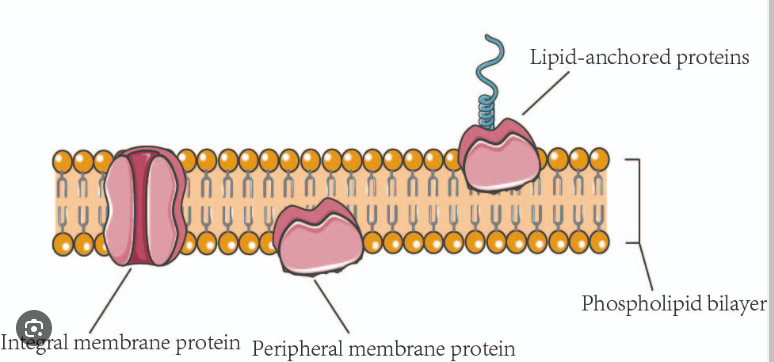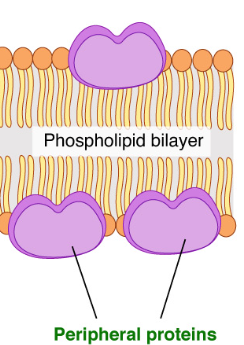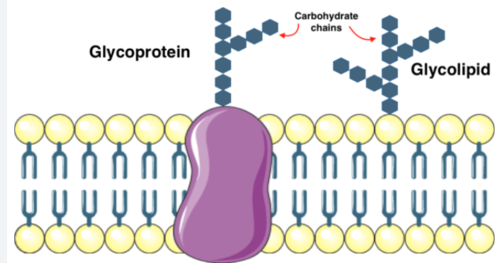Unit 1: Biochemistry - #4 Role of Membrane Proteins
1/3
There's no tags or description
Looks like no tags are added yet.
Name | Mastery | Learn | Test | Matching | Spaced |
|---|
No study sessions yet.
4 Terms
Integral vs Peripheral Membrane Proteins
All membrane proteins can be separated into these two additional categories
Integral Membrane Protein → Embedded in the lipid bilayer
Peripheral Membrane Protein → On the surface of the lipid bilayer

Integral/Transmembrane Proteins
Span the entire bilayer and are exposed to the aqueous environment on both sides of the membrane
Within Membrane - Non polar amino acids are hydrophobic which matches the hydrophobic region of the phospholipid tails
Outer Membrane - Polar amino acids are hydrophilic and extend into the extracellular fluid on the outside and into the cytoplasm on the inside
Transport Proteins → Acts as channels or pumps

Peripheral Proteins
Loosely bound to the surface of the cell membrane
Do not interact with the hydrophobic core of the membrane
Outer Surface - They hold onto the surface of the membrane with ionic and H-bonds. Most are on the extracellular side of the membrane, but some are on the cytoplasm side as well.
Act as cell identity markers (antigens) or receptors
Inner Surface - Anchor points for microtubules or microfilaments

Membrane Carbohydrates
Some of the membrane lipids and proteins have carbohydrates linked to them.
Called glycolipids (any membrane lipid + carbohydrate) or glycoproteins (membrane component with sugar or carb + aa)
Crucial for cell-cell recognition and signaling
Allows the cell to distinguish one cell from another and to identify foreign cells or particles (bacterial or viral infections)
Recognize and bind to carbohydrate receptors on adjacent cells and leads to attachment between cells
